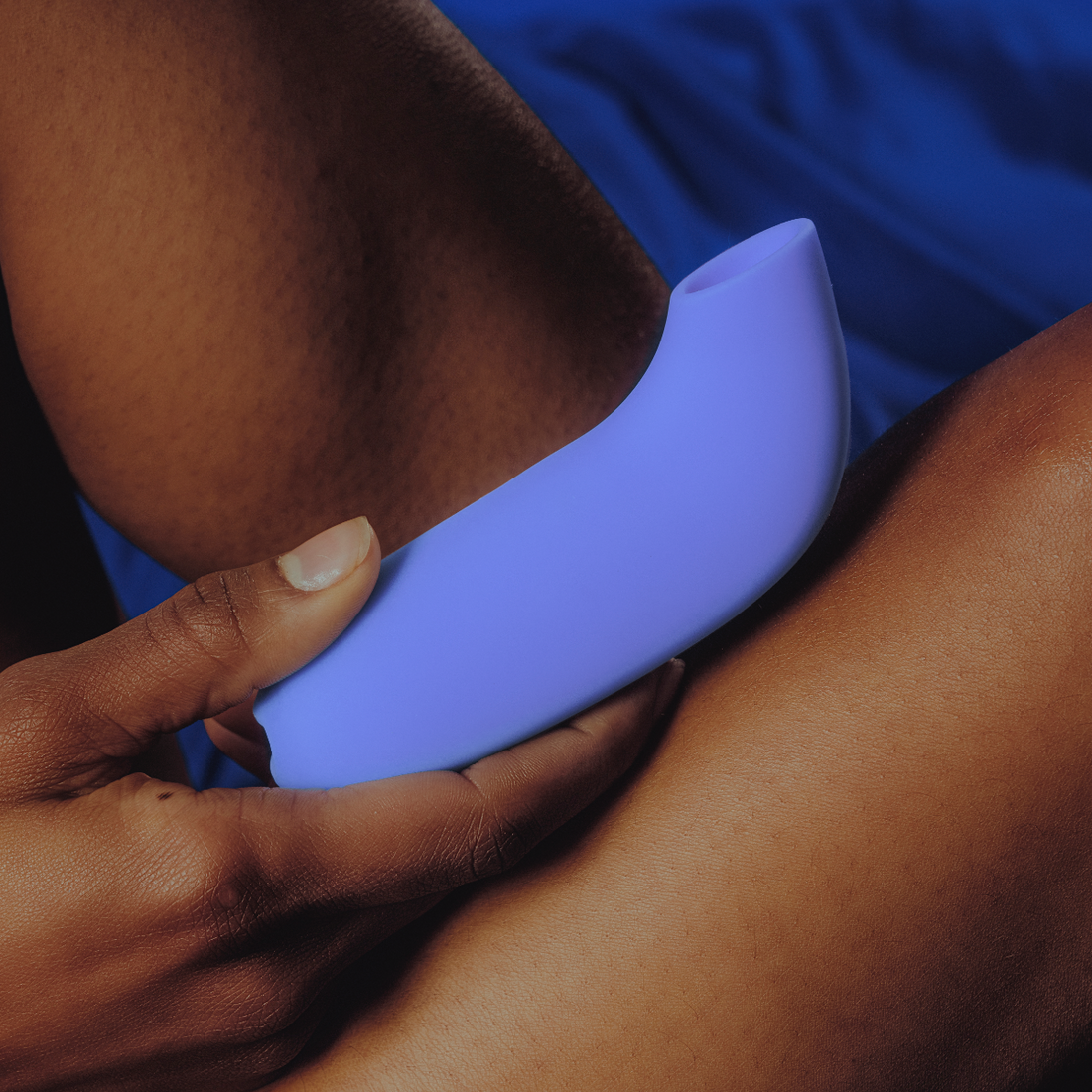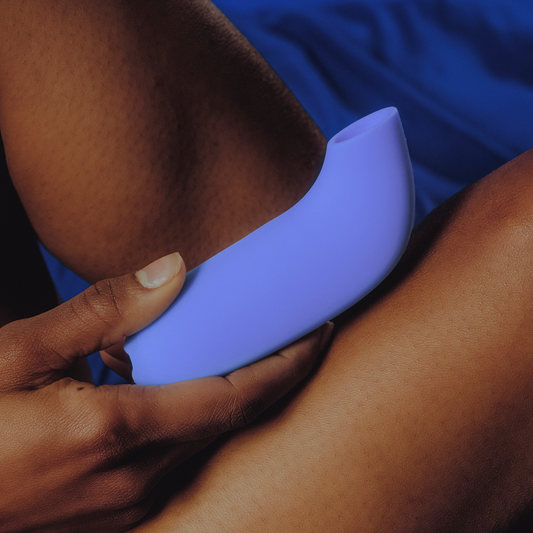If you’ve never heard the term “edging,” get excited. We’re about to tell you about a technique that results in stronger, more intense orgasms, and creates extra sexual tension to boot.
Let’s start with the basics: What is edging? It’s a method that involves bringing yourself almost to the point when you reach
orgasm (the edge, if you will), backing off – either by pausing sex completely or decelerating stimulation – and then getting yourself to the point of orgasm again. You can bring yourself to the cusp once or repeatedly, and when you finally let yourself go, the orgasm should be more powerful. That’s why edging is also known as orgasm control.
But, of course, there’s more to the practice than just that. Now that you’re intrigued, let’s dive into what else there is to know about edging.
Here’s why edging works
Edging intensifies your orgasms for a few reasons, and one is simply because by delaying your orgasm, it takes longer. “The most important element, actually, is probably time, and the effects that extended stimulation can have,” explains Dr. Carol Queen, staff sexologist at
Good Vibrations. “Unlike ‘hot-to-trot’ masturbation or partner sex that lasts only a few minutes, edging is practically defined by being drawn out, and this allows arousal to build.” And more arousal results in a more enjoyable orgasm.
Amy Levine, sex coach and founder of
Ignite Your Pleasure, adds that “the idea of stopping and starting allows you to tease your partner by playing with their levels of sexual tension,” which can lead to bigger and better orgasms. Plus, Levine says, “there’s also a psychological perk: Experimenting with going to the brink and back, you reap the reward of the possibility of a more intense outcome. It’s risk/reward at its finest.”
How to master edging
As wonderful as edging is, it’s not a foolproof technique. The first few times you delay orgasm, you might find yourself losing the orgasm completely after you back off, accidentally climaxing before you were ready, or not being able to get aroused again after the first deceleration. But don’t get disheartened – you may just have to practice edging for a while in order to become an expert.
Get a sense of your partner’s and your sexual response patterns and triggers.
When it comes to edging’s best practices, the main thing Levine recommends is tuning in to what’s happening in your body. “Awareness of the senses in the moment – most importantly the physical sensations and visual and auditory cues – is what you need to master in order to know when to edge,” she says.
You’ll want to get a sense of your partner’s and your own body’s sexual response patterns and triggers. Figure out what types of sexual stimulation you each respond to, and when you’re most likely to ejaculate or climax. “You want to know the flow of the stages and what to look for, how it feels and when,” Levine explains, “so you’ll be aware of when you or your partner are at the spot before the ‘point of no return’” – that is, the point when climaxing is inevitable.
It doesn’t have to be mental control; there are physical “tricks” that can help with orgasm control as well.
Penis-havers may want to try the “squeeze method” when they get close, pausing for 20-30 seconds to squeeze the head of the penis to prevent ejaculation, before resuming sexual activity. All genders can use the “start-stop method,” pausing stimulation of the penis or clitoris/vagina for a few seconds to calm sexual excitement before getting back to the action; switching things up with oral sex or another type of sex play for a bit can also delay an imminent climax.
Don’t be afraid to experiment with what works best for you. Even though edging is largely defined as pausing at the brink of an orgasm, maybe “just stopping” doesn’t do it for you. Levine recommends trying to change your motions, positions, and anything else when you’re at the cusp to see if you get a better payoff.
And yeah, you should totally also try it while masturbating
This technique is by no means only for partnered sex! Playing with edging while you’re
masturbating is just as effective and can deliver exquisite sexual pleasure. Queen recommends taking your time while trying to edge solo and suggests, “if you usually spend five minutes masturbating, plan to take at least 30, more if you can. Involve your whole body—this isn’t only about rubbing or stroking your genitals, but becoming aware of your erotic experience on a whole-body level. You might find yourself touching and stroking more slowly.”
Penis-havers who suffer from premature ejaculation can benefit from edging.
If you’re using a vibrator or other motorized sex toy, Levine suggests changing the speed or mode when you build up to the edge of an orgasm. Or if your style is more hands-on, you can try switching up your strokes. Breaking away from your routine will not only help you edge, but it also might lead to discovering fun, new ways to pleasure yourself.
There are more benefits than just stronger orgasms
Sure, a more intense orgasm is motive enough for many of us to try edging, and of course, better sex improves sexual health and wellness. But there are other reasons to introduce the practice into your bedroom.
Edging translates into longer sex, which besides being an obvious perk, is also beneficial for those who come earlier then they’d like. “Part of edging is coming right up to orgasm and then backing down a little to extend the session,” Queen says, and this can help a partner to last longer, especially when they start to “recognize upcoming orgasm and control it.”
Penis-havers who suffer from premature ejaculation can benefit from edging, because it gives them better control over their physical arousal and performance. In fact, orgasm control is usually the first medical advice penis owners receive when they ask a certified sex therapist (CST) for help with premature ejaculation. It may take a little time to adjust to the “blue balls” feeling in the testicles (technically known as epididymal hypertension) that occurs with a delayed orgasm, but no worries; there are no harmful side effects to delaying orgasm.
Orgasm control may also be recommended by sexual medicine experts for the
partners of vulva-havers who suffer from sexual dysfunction issues like
anorgasmia, defined by ISSM (The International Society for Sexual Medicine) as difficulty or inability to reach orgasm. Edging prolongs sexual encounters and can increase the length of time a vulva owner receives clitoral stimulation, so it may provide enough excitement to push them over the edge.
Couples often find that edging brings them closer together. Some use orgasm control as a form of foreplay. And when practiced during sexual intercourse or penetration, it can give them more time to explore and learn the ins-and-outs of their partners’ sexual arousal triggers. Others, as we’ve mentioned, simply use edging to prolong their sexual experiences and the enjoyment they produce.
Those who integrate BDSM activities into their sex life may practice also edging, in the context of a Dominant partner denying or controlling a submissive’s orgasms.
Queen adds that overall, edging “lets you become extra-aware of arousal and your specific responses, which can enhance all kinds of sex.” In essence, getting to know your body and what you like better is never a bad idea!




























